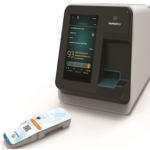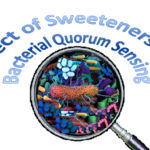WHO estimates that around the world, almost 1 in 10 people gets sick eating contaminated food each year. Food contamination results in 420,000 deaths and the loss of 33 million healthy life years. Food safety is a global issue, but each outbreak is local. All countries are not equal in their food safety achievements. To better understand food safety globally, we are looking for volunteers to help us cover the world in our group and on the adjacent website http://ask-bioexpert.com/. We are asking for help covering recalls, outbreaks, and new regulations worldwide. Also, it is essential to include new technologies...
ruth
It is crucial to have a technology that can rapidly and accurately distinguish between bacterial and viral infections. Such technology can reduce the overuse of antibiotics in viral infections. MeMed Diagnostics (developed in Israel) is a personalized diagnostics company founded in 2009. The company developed an immunoassay test to differentiate bacteria from viruses using chemiluminescence detection technology. The devices distinguish between bacterial and viral infections based on patients’ immune responses to different infection types, enabling physicians to get rapid (15 minutes) and actionable clinical information to make informed antibiotic treatment decisions. The MeMed Key cartridges allow simultaneous measurements of up...
ruth
2021 was still a year dominated by COVID-19, but the food industry was better equipped to continue food production without the interruptions of 2020, and the virus no longer shut plants down as it did in 2020. 2021 looked much more like 2019 than 2020 for food safety when comparing outbreaks. While slow progress is being made in food safety, the number of outbreaks has not significantly diminished over the years. Foodborne diseases remain a global public health challenge worldwide. In 2021 the CDC reported 16 outbreaks. In the last couple of weeks, major outbreaks such as Fresh Express and...
ruth
Scientists at Ben-Burion University in Israel discovered that some artificial sweeteners hurt the gut flora to quorum sensing. The study shows that aspartame, sucralose, and saccharin have significant inhibitory actions on the Gram-negative bacteria N-acyl homoserine lactone-based (AHL) communication system. The study concluded that artificial sweeteners disrupt communication, indicating that artificial sweeteners may be problematic in changing the microbiome and potentially increasing disease risk. Three less common sweeteners, acesulfame potassium (Ace-K), advantame, and neotame, did not have this effect.




